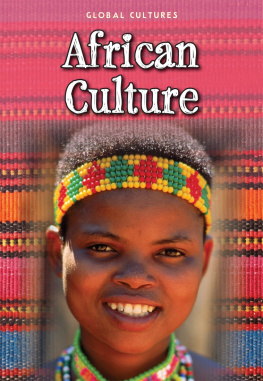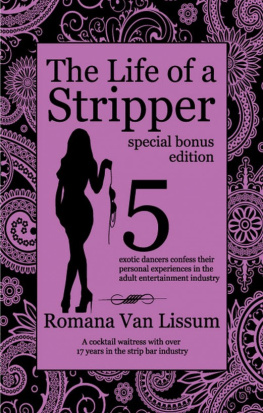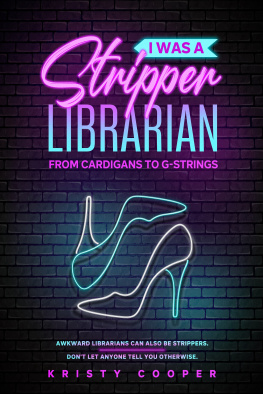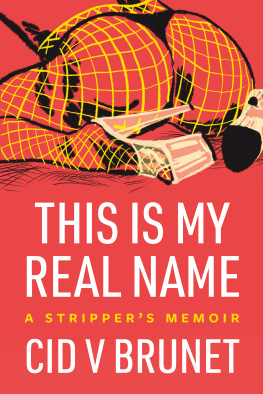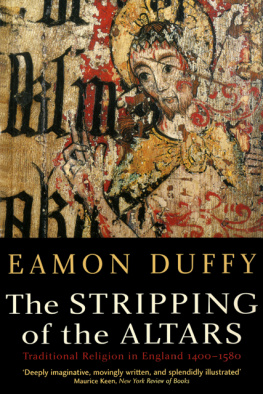Stripping, Sex, and Popular Culture
Catherine M. Roach

Contents
To KMM
and also to MAM,
in a lifetime of sisterhood
Dress, Body, Culture
Series Editor: Joanne B. Eicher, Regents Professor, University of Minnesota
Advisory Board:
Ruth Barnes, Ashmolean Museum, University of Oxford
James Hall, University of Illinois at Chicago
Ted Polhemus, Curator, Street Style Exhibition, Victoria and Albert Museum
Griselda Pollock, University of Leeds
Valerie Steele, The Museum at the Fashion Institute of Technology
Lou Taylor, University of Brighton
John Wright, University of Minnesota
Books in this provocative series seek to articulate the connections between culture and dress which is defined here in its broadest possible sense as any modification or supplement to the body. Interdisciplinary in approach, the series highlights the dialogue between identity and dress, cosmetics, coiffure and body alternations as manifested in practices as varied as plastic surgery, tattooing, and ritual scarification. The series aims, in particular, to analyze the meaning of dress in relation to popular culture and gender issues and will include works grounded in anthropology, sociology, history, art history, literature, and folklore.
ISSN: 1360-466X
Previously published in the Series
Helen Bradley Foster, New Raiments of Self: African American Clothing in the Antebellum South
Claudine Griggs, S/he: Changing Sex and Changing Clothes
Michaele Thurgood Haynes, Dressing Up Debutantes: Pageantry and Glitz in Texas
Anne Brydon and Sandra Niessen, Consuming Fashion: Adorning the Transnational Body
Dani Cavallaro and Alexandra Warwick, Fashioning the Frame: Boundaries, Dress and the Body
Judith Perani and Norma H. Wolff, Cloth, Dress and Art Patronage in Africa
Linda B. Arthur, Religion, Dress and the Body
Paul Jobling, Fashion Spreads: Word and Image in Fashion Photography
Fadwa El Guindi, Veil: Modesty, Privacy and Resistance
Thomas S. Abler, Hinterland Warriors and Military Dress: European Empires and Exotic Uniforms
Linda Welters, Folk Dress in Europe and Anatolia: Beliefs about Protection and Fertility
Kim K.P. Johnson and Sharron J. Lennon, Appearance and Power
Barbara Burman, The Culture of Sewing
Annette Lynch, Dress, Gender and Cultural Change
Antonia Young, Women Who Become MenDavid Muggleton, Inside Subculture: The Postmodern Meaning of Style
Nicola White, Reconstructing Italian Fashion: America and the Development of the Italian Fashion Industry
Brian J. McVeigh, Wearing Ideology: The Uniformity of Self-Presentation in Japan
Shaun Cole, Don We Now Our Gay Apparel: Gay Mens Dress in the Twentieth Century
Kate Ince, Orlan: Millennial Female
Nicola White and Ian Griffiths, The Fashion Business: Theory, Practice, Image
Ali Guy, Eileen Green and Maura Banim, Through the Wardrobe: Womens Relationships with their Clothes
Linda B. Arthur, Undressing Religion: Commitment and Conversion from a Cross-Cultural Perspective
William J.F. Keenan, Dressed to Impress: Looking the Part
Joanne Entwistle and Elizabeth Wilson, Body Dressing
Leigh Summers, Bound to Please: A History of the Victorian Corset
Paul Hodkinson, Goth: Identity, Style and Subculture
Michael Carter, Fashion Classics from Carlyle to Barthes
Sandra Niessen, Ann Marie Leshkowich and Carla Jones, Re-Orienting Fashion: The Globalization of Asian Dress
Kim K. P. Johnson, Susan J. Torntore and Joanne B. Eicher, Fashion Foundations: Early Writings on Fashion and Dress
Helen Bradley Foster and Donald Clay Johnson, Wedding Dress Across Cultures
Eugenia Paulicelli, Fashion under Fascism: Beyond the Black Shirt
Charlotte Suthrell, Unzipping Gender: Sex, Cross-Dressing and Culture
Yuniya Kawamura, The Japanese Revolution in Paris Fashion
Ruth Barcan, Nudity: A Cultural Anatomy
Samantha Holland, Alternative Femininities: Body, Age and Identity
Alexandra Palmer and Hazel Clark, Old Clothes, New Looks: Second Hand Fashion
Yuniya Kawamura, Fashion-ology: An Introduction to Fashion Studies
Regina A. Root, The Latin American Fashion Reader
Linda Welters and Patricia A. Cunningham, Twentieth-Century American Fashion
Jennifer Craik, Uniforms Exposed: From Conformity to Transgression
Alison L. Goodrum, The National Fabric: Fashion, Britishness, Globalization
Annette Lynch and Mitchell D. Strauss, Changing Fashion: A Critical Introduction to Trend Analysis and Meaning
Marybeth C. Stalp, Quilting: The Fabric of Everyday Life
One of my best friends is a stripper.
We met as five-year-old girls, growing up in the same middle-class leafy suburb of Ottawa, in Canada. It was a new residential development, full of kids riding bicycles and playing in the woods down by the Ottawa River. Maries family lived on the street behind mine. The streets formed two interlocking crescents whose pattern meant that we passed each others house all the time. Our families stayed put for twenty-five years indeed, mine is still there while we went to the same Catholic elementary school; the same junior high; and then on to high school together, in a building just across the playing fields from our old elementary school. I often went with her family to their cottage on a lake in the Gatineau Hills north of the city. Because my mother wouldnt let me have a cat or a dog, their Black Lab became my surrogate pet. We both went to the University of Ottawa for our undergraduate and masters degrees, while still living at home with our families. We often took the bus downtown to campus together where we met up with another neighborhood friend, Anita, for a weekly breakfast club.
Marie and I then came down to the United States at the same time to do our Ph.D.s, hers in English literature and medieval studies at a prestigious Midwestern university and mine in religious studies at Harvard. Marie used feminist theory in her research and teaching; she was, and remains now, a self-avowed feminist. After several years studying full-time, she switched to part-time status before leaving school completely for a while to work in administration at the Gender/Womens Studies Department of her university. She then decided to resume her program full-time in order to determine once and for all if she wanted to finish her degree. Knowing that she couldnt combine school work with her administrative job, she quit her position and, for income and out of curiosity, started dancing at the local strip club (there was only one in her small town), first on the day shift and then on the more lucrative night shift. She found that she enjoyed the job and that it let her manage her expenses, while still leaving plenty of time for library research and classes. At the end of the calendar year, she made the decision that she truly didnt want to be employed in academia. So, like many other people and for a variety of reasons, Marie left her Ph.D. program. But Foxy kept on dancing.


